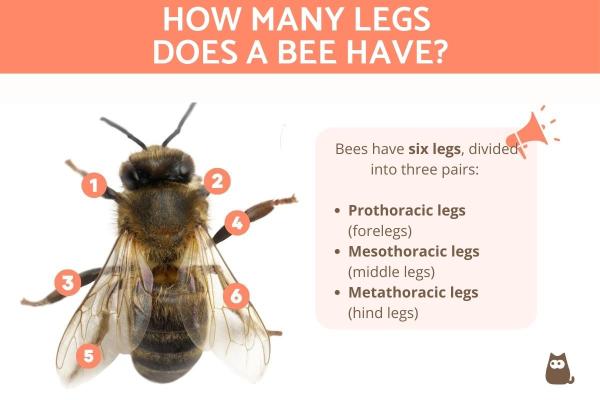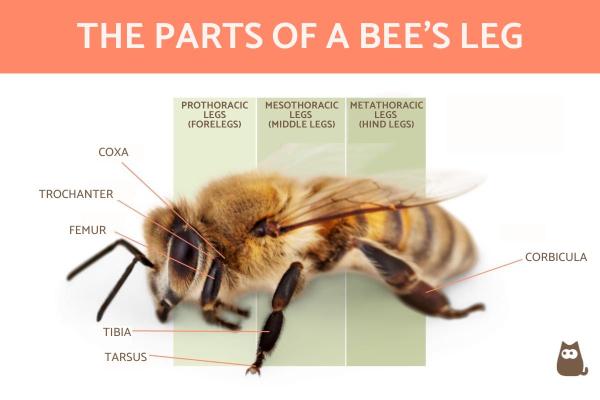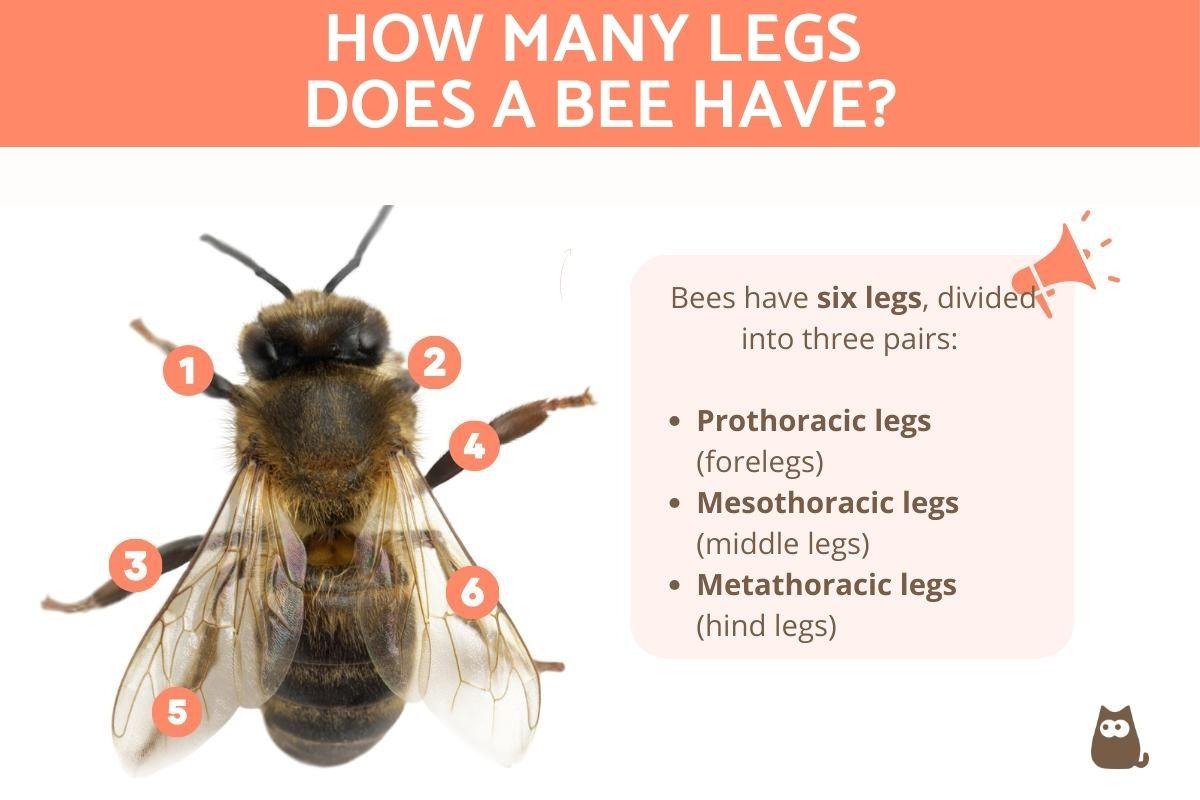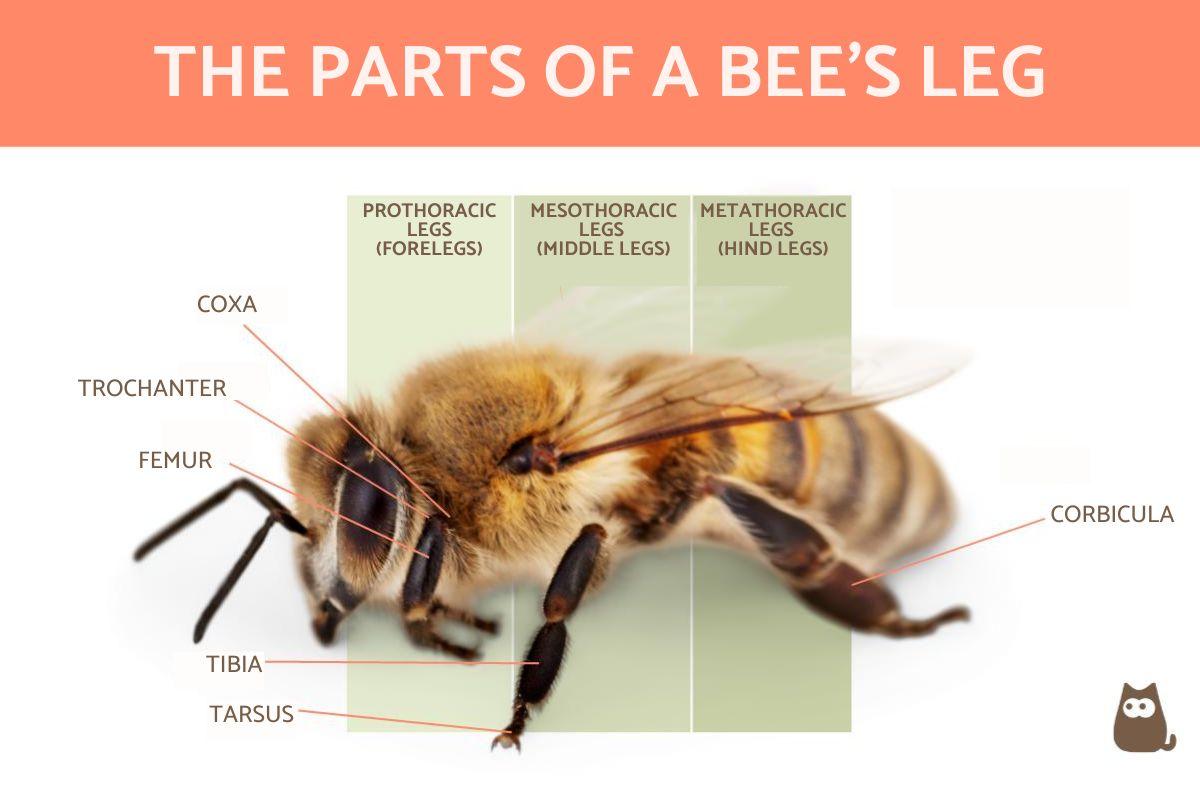How Many Legs Does a Bee Have?


Bees are flying insects belonging to the Apoidea superfamily. They are closely related to wasps and ants, and are known for their remarkable roles in pollination and, in the case of the widely recognized honeybee, honey production. But delve deeper, and you'll discover their legs. These aren't just walking tools, but specialized instruments key to their survival and colony success. Different leg structures across species showcase fascinating adaptations, reflecting unique niches and food sources.
In the following AnimalWised article, we will discuss how many legs do bees have, as well as its components and unique functions.
How many legs do bees have?
There are estimated to be over 20,000 species of bees worldwide, belonging to various families and genera. Some of the most well-known types of bees include honeybees, bumblebees, carpenter bees, and mason bees.
All species of bees typically have six legs and two pairs of wings, just like most other insects. These legs are used for various purposes, including walking, gripping surfaces, and collecting pollen and nectar.
Fascinated by the intricate world of bees? Learn all about their dances and buzzing code in this article

The structure of bees' legs
All bee legs, regardless of the species, share a common blueprint consisting of five distinct segments:
1. Coxa
This segment acts as the leg's attachment point to the thorax, enabling multidirectional movement. Variations in coxa shape across species are potentially linked to specialized behaviors, such as the broader coxa facilitating efficient burrowing in ground-nesting bees.
2. Trochanter
Functioning as a miniature hinge, this segment connects the coxa to the femur and contributes to the remarkable flexibility observed in bee leg movement. Notably, some species possess two trochanter segments for even finer control over leg positioning.
3. Femur
The bulkiest and longest segment, the femur houses powerful muscles responsible for generating leverage and thrust. Its size and strength correlate with the specific demands faced by different bee species, impacting tasks like transporting materials or burrowing.
4. Tibia
This segment exhibits diverse adaptations crucial for various tasks. Its surface can be adorned with:
- Spines and bristles: acting as microscopic tools for manipulation, these structures enable bees to grip, scrape, and shape materials with remarkable precision, facilitating intricate construction tasks.
- Spurs (present in some species): these spine-like projections function as miniature cleaning tools, ensuring the pliability of wax for construction.
5. Tarsus
This multisegmented "foot" terminates in sharp claws, providing secure grip on diverse surfaces. Variations in the number of segments exist across species, but the core function remains constant, which is anchoring the bee during construction and other activities.
It is important to note that while the shared structure provides a common foundation, subtle adaptations in segment size, presence of specialized features, and hair distribution reflect the diverse needs and behaviors of different bee species.
Want to understand how honeybees develop and thrive? Read our next article about their life cycle.

Bees' leg types
Bees have six legs arranged in three leg pairs (prothoracic, mesothoracic, and metathoracic). Each of these leg pairs possesses distinct anatomical features adapted for specific tasks. Let us take a closer look at each:
Prothoracic legs (forelegs):
Located closest to the head, these legs feature comb-like structures (pectinate setae) primarily used for grooming and manipulating pollen. Additionally, taste receptors on the tarsi aid in sensing nectar quality. The tarsi refer to the distal segment of the foot, located beyond the metatarsus. It's composed of several small bones arranged in a row, and it includes the toes in humans and other similar-bodied animals. Furthermore, sharp claws facilitate gripping surfaces and object manipulation within the hive.
Mesothoracic legs (middle legs):
The mesothoracic legs, also known as the middle legs, are the second pair of legs located on a bee's thorax. The mesothoracic legs are crucial for hive construction and maintenance. They act as specialized tools for carrying, manipulating, and cleaning materials. With their spiny grips and flexible joints.
Metathoracic legs (hind legs):
Metathoracic legs, also known as hind legs, are the third and most specialized pair of legs in bees. They play a crucial role in the bee's survival by facilitating pollen collection and transport.
The key feature is the corbicula, a specialized pouch on the tibia also known as the "pollen basket." The corbicula is a concave depression located on the outer surface of the tibia. Additionally, it is lined with dense, stiff hairs called scopae. These hairs are modified and act like tiny magnets, attracting and adhering pollen grains to their surface. Furthermore, powerful muscles power the legs for navigating through dense vegetation during foraging.
Can bees survive without a leg?
While losing a leg isn't fatal for every bee, it's definitely not ideal. Challenges depend on which leg is missing, the severity, and the bee species. They might struggle with collecting food, grooming, or regulating temperature. However, their resilient nature means they can often adapt, though with reduced productivity and potential need for colony support.

If you want to read similar articles to How Many Legs Does a Bee Have?, we recommend you visit our Facts about the animal kingdom category.
- Martins, AC, Melo, GA, & Renner, SS (2015). Gain and loss of specialization in two oil-bee lineages, Centris and Epicharis (Apidae). Evolution , 69 (7), 1835-1844.
- Mitko, L., Weber, MG, Ramirez, SR, Hedenström, E., Wcislo, WT, & Eltz, T. (2016). Olfactory specialization for perfume collection in male orchid bees. Journal of Experimental Biology , 219 (10), 1467-1475.
- Roberts, R.B., & Vallespir, S.R. (1978). Specialization of hairs bearing pollen and oil on the legs of bees (Apoidea: Hymenoptera). Annals of the Entomological Society of America , 71 (4), 619-627.
- Ruppert, E.E., Fox, R.S., & Barnes, R.D. (2005). Zoology of invertebrates: a functional-evolutionary approach. In Zoologia dos invertebrates: a functional-evolutionary approach (pp. 1045-1045).
- Somos, Q., Mainero, JS, de León, MD, Delgado, J., Aquino, JM, Díaz-Ruelas, A., ... & Rodríguez, G. Bee pollen, royal jelly and propolis.








